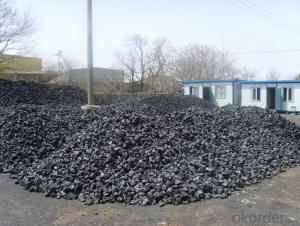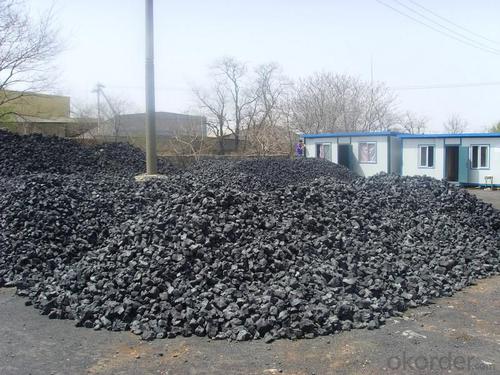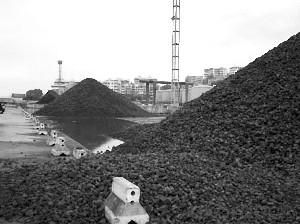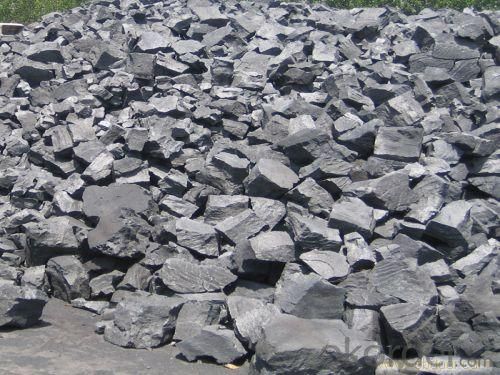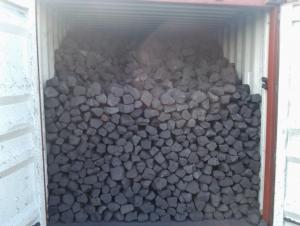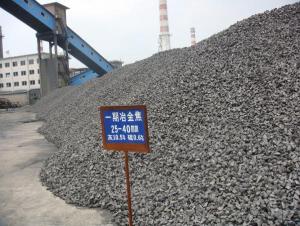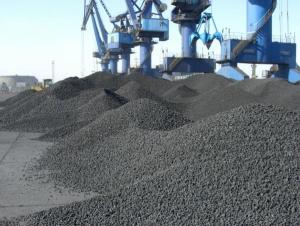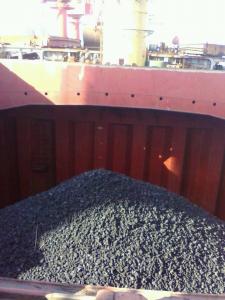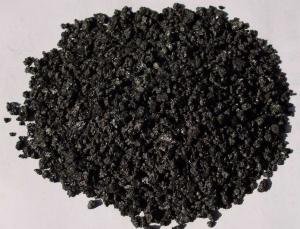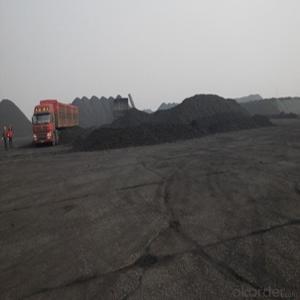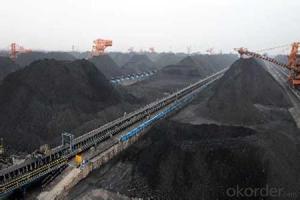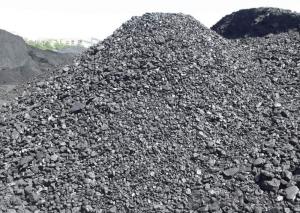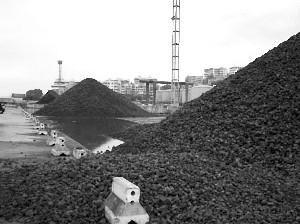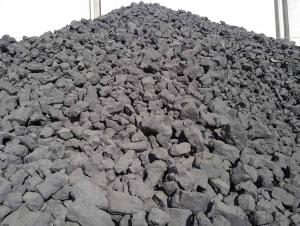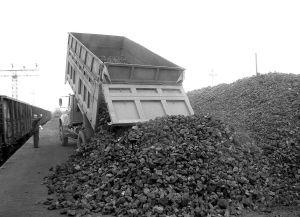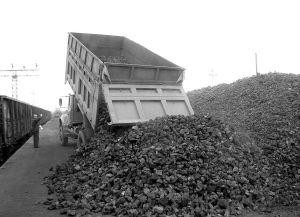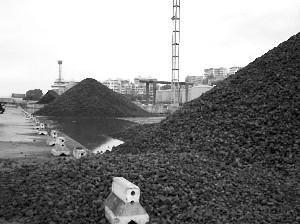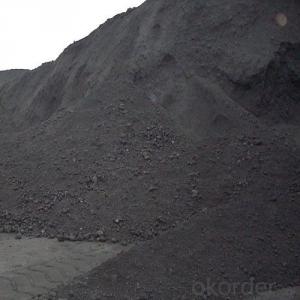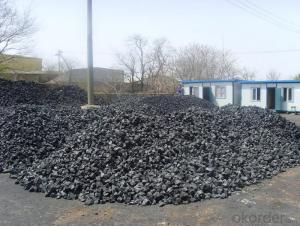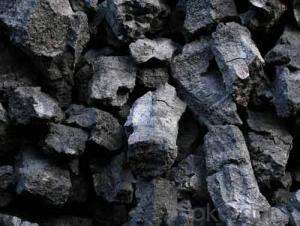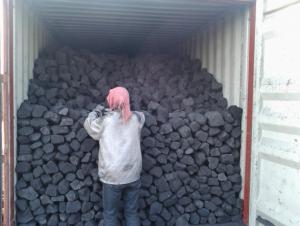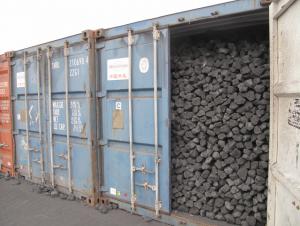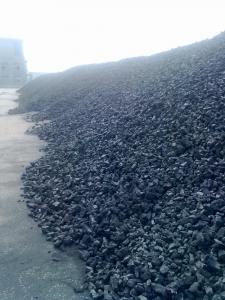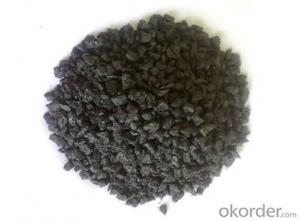CNBM Metallurgical Coke of Coke Strength after Reactivity 65
- Loading Port:
- Tianjin
- Payment Terms:
- TT OR LC
- Min Order Qty:
- 100 m.t.
- Supply Capability:
- 3000 m.t./month
OKorder Service Pledge
OKorder Financial Service
You Might Also Like
1. Structure of Metallurgical Coke of Coke Strength after Reactivity 65 Description:
Coke is made by high temperature metallurgical coke for blast furnace smelting, casting and gasification. Occurring in the process of coking after recovery and purification of coke oven gas is a high calorific value of fuel, is an important industrial raw material in organic synthesis.
Coke is mainly used for blast furnace ironmaking and used for copper, lead, zinc, titanium, antimony, mercury and other non-ferrous metal smelting of blast furnace, reducing agent, compound and the function of stock column frame.
Blast furnace with Coke instead of charcoal, which laid a foundation for the large-scale of modern blast furnace, is a major milestone in the history of metallurgy.
2. Main Features of the Metallurgical Coke of Coke Strength after Reactivity 65:
• Quality assurance
• Mutual benefit
• Preferential price
• Various choice
3. Metallurgical Coke of Coke Strength after Reactivity 65 Images:
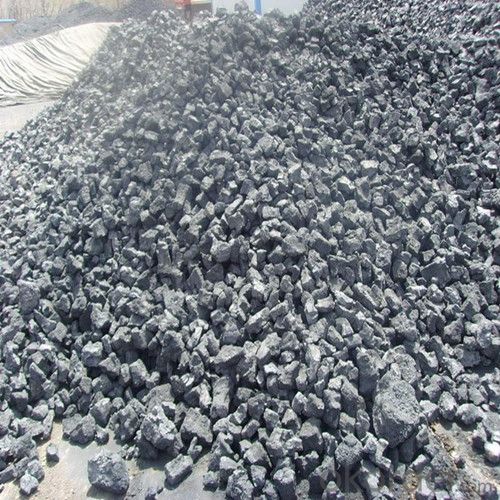
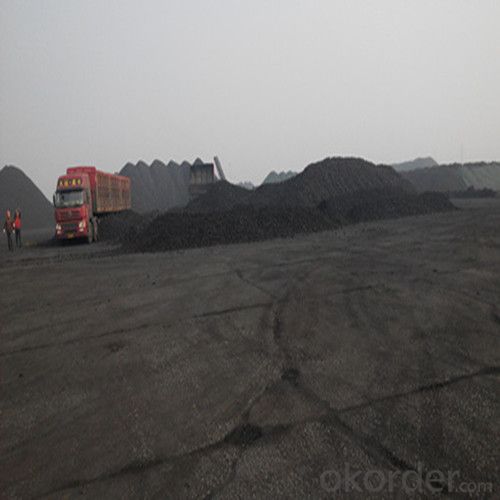
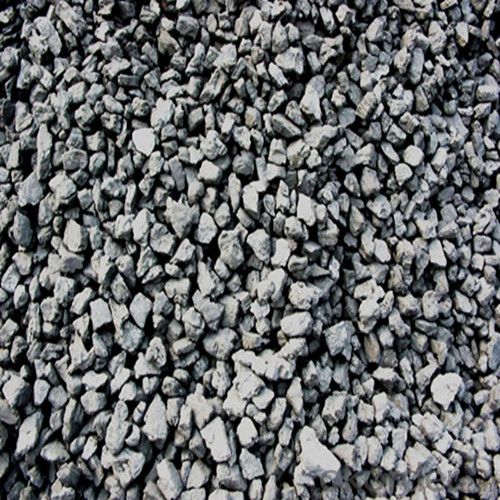
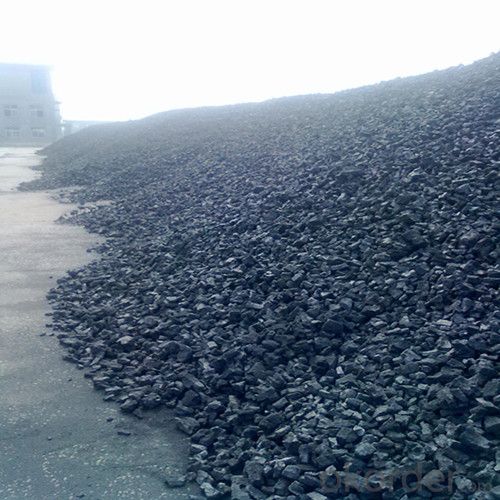
4. Metallurgical Coke of Coke Strength after Reactivity 65 Specification:
Parameters | Guarantee | Rejection |
Total Moisture (As received basis) | 5% max | |
Ash (dry basis) | 12.5% max | > 13.5% |
Volatile Matter (dry basis) | 1.5% max | > 1.8% |
Sulphur (dry basis) | 0.65% max | > 0.75% |
Phosphorus (dry basis) | 0.035% max | > 0.045% |
M10 | 7% max | > 9% |
M40 | 84% min | <82% |
CSR | 65% min | <63% |
CRI | 25% max | > 27% |
Size 30-90 mm | 90% min | |
+90 mm | 5% max | > 8% |
-30mm | 5% max | > 8% |
5. FAQ
We have organized several common questions for our clients,may help you sincerely:
1) How to guarantee the quality of the products?
We have established the international advanced quality management system,every link from raw material to final product we have strict quality test;We resolutely put an end to unqualified products flowing into the market. At the same time, we will provide necessary follow-up service assurance.
2) What are coke's main physical properties?
The average heat capacity is 0.808 kj/(KGK) (100 ℃), 1.465 kj/(KGK) (1000 ℃)
Thermal conductivity is 2.64 kj/(MHK) (room temperature), 6.91 kj/(MHK) (900 ℃);
Ignition temperature (air) is 450-650 ℃.
3) How about your company?
Our company began to export coke when China cancelled 40% of coke export tariffs and quotas on January 1, 2013. We export many kinds of coke, such as CSR60 % and CSR 62% metallurgical coke (met coke), the NUT coke of 20 to 50 mm, coke breeze of 3 to 6 mm, and so on.
- Q: What does Coke test index M25 mean?
- . Coke crushing strength refers to coke can resist foreign impact force without ability along cracks or defects at the broken, represented by the M40 value; wear strength of coke coke refers to the ability to resist external friction without surface of glass forming debris or powder, said M10. The cracking degree of coke affects the M40 value of its breaking strength, and the pore structure of coke affects the M10 value. There are many methods for determination of M40 and M10, our method using migon drum test in Germany.
- Q: Coke belongs to the coal industry
- Classification and code (2002 Edition) code 25 petroleum processing, coking and nuclear fuel processing industry classification and code (2002 Edition) A agriculture, forest, animal husbandry and fishery 23 printing and record medium reproduction 4900 building decoration 01 24 agricultural stationery and sporting goods manufacturing 50 other building 02 forestry 25 oil processing and coking and nuclear fuel processing F transportation
- Q: Effect of coal fineness on coke
- From the point of view of the uniformity of coal material, the more finely pulverized coal. But if the coal fineness is small, because of the presence of a larger particle weakly caking coal and ash and coke cracks increased, the uniformity of deterioration. If the particle size of coal is not uniform, it is easy to produce segregation phenomenon in the transportation process, the grain size of different size will be gradually stratified by size. Due to the different coal hardness of the coal blending, large particles of coal is often a greater hardness of coal, so the segregation phenomenon, will make the different coal species gradually separated, so that the uniformity of coal deterioration.
- Q: What is the difference between coking plant and coke plant
- Production equipment and production processes are complex.Coke plant, generally only the coal into coke on it, so simple.
- Q: What kind of coke is needed for smelting special steel
- The role of coke in blast furnace ironmaking can be summarized as follows: 1:(1) provide the heat: coke in the coke oven in front of the raceway in the intense combustion, combustion heat generated in the blast furnace smelting process is the main heat source(2) reduction: high temperature gas generated in coke combustion in the raceway, passed to the material in the process of heat rising, the endothermic reaction and coke formation, CO and H2, then CO and iron oxide in iron ore reduction reaction is transformed into metallic iron.
- Q: I don't understand. With coke, then the rest of the coke, they are selling it?
- According to the use of coal can be divided into: injection coal, coal, coal coking coal can be divided into: lean coal, coking coal, gas coal, fat coal, lignite in five categories. Coking coal is used to refine coke. The power plant's coal coal power coal can also be said that under normal circumstances, can not be used for coking coal can be used to make electricity.
- Q: Listen to a lot of people say that steel is now coke is not true?
- But at present, the iron making technology without coke has not yet been relatively mature, and it is not dominant compared with the traditional ironmaking technology. Coke industry still has development prospects.
- Q: Coke and coal is one thing
- How coal is formedCoal has been hailed as the black gold, the food industry, it is one of the main sources of energy used in the human world since eighteenth Century. Although its important position has been replaced by oil, but in the future for a long period of time, due to the exhaustion of petroleum, inevitable decline, but because of the huge reserves of coal, coupled with the rapid development of science and technology, the new technology of coal gasification is becoming more mature and widely used, coal will become one of the human production life cannot substitute energy.
- Q: What is the use of coke
- The physical properties of the coke coke coke screening composition, physical properties including bulk density, coke coke coke true relative density, apparent relative density and porosity of coke, coke, coke, thermal conductivity and specific heat of coke thermal stress, ignition temperature of coke, coke, coke thermal expansion coefficient of shrinkage, resistivity and permeability of coke coke. The physical properties of coke are closely related to its mechanical strength, thermal strength and chemical properties at room temperature. Following the main physical properties of coke: true density is 1.8-1.95g/cm3 0.88-1.08g/ cm3; apparent density; porosity is 35-55%; bulk density is 400-500kg/ m3; the average heat capacity is 0.808kj/ (KGK) (100 C), 1.465kj/ (KGK) (1000 DEG C); the thermal conductivity is 2.64kj/ (MHK) (room temperature), 6.91kg/ (MHK) (900 DEG C); ignition temperature (air) is 450-650 DEG C; dry ash free calorific value is 30-32KJ/g;
- Q: What are the criteria for coke classification and how to distinguish between primary and two grade coke?
- 4, coke in volatile coke: according to the volatile content of coke can determine maturity. Such as volatile than 1.5%, said coke; volatile matter less than 0.5 - 0.7%, said too much, generally mature metallurgical coke volatile is about 1%.5, the moisture in the coke: water fluctuation will make coke measurement is not allowed, thus causing the furnace condition fluctuation. In addition, coke moisture will increase the M04 high, M10 low, to the drum index error6, coke screening composition: grain size of coke in blast furnace smelting. It is very important to China in the past, coke size requirements: on the coke oven (1300 - 2000 square meters) of coke particle size greater than 40 mm; medium and small blast furnace coke particle size greater than 25 mm. But some mills tests show that the coke 40 - 25 mm in size as well. More than 80 mm coke to whole, little change in its size range. So the coke size uniform, large gap, small resistance, the furnace is running well.
Send your message to us
CNBM Metallurgical Coke of Coke Strength after Reactivity 65
- Loading Port:
- Tianjin
- Payment Terms:
- TT OR LC
- Min Order Qty:
- 100 m.t.
- Supply Capability:
- 3000 m.t./month
OKorder Service Pledge
OKorder Financial Service
Similar products
Hot products
Hot Searches
